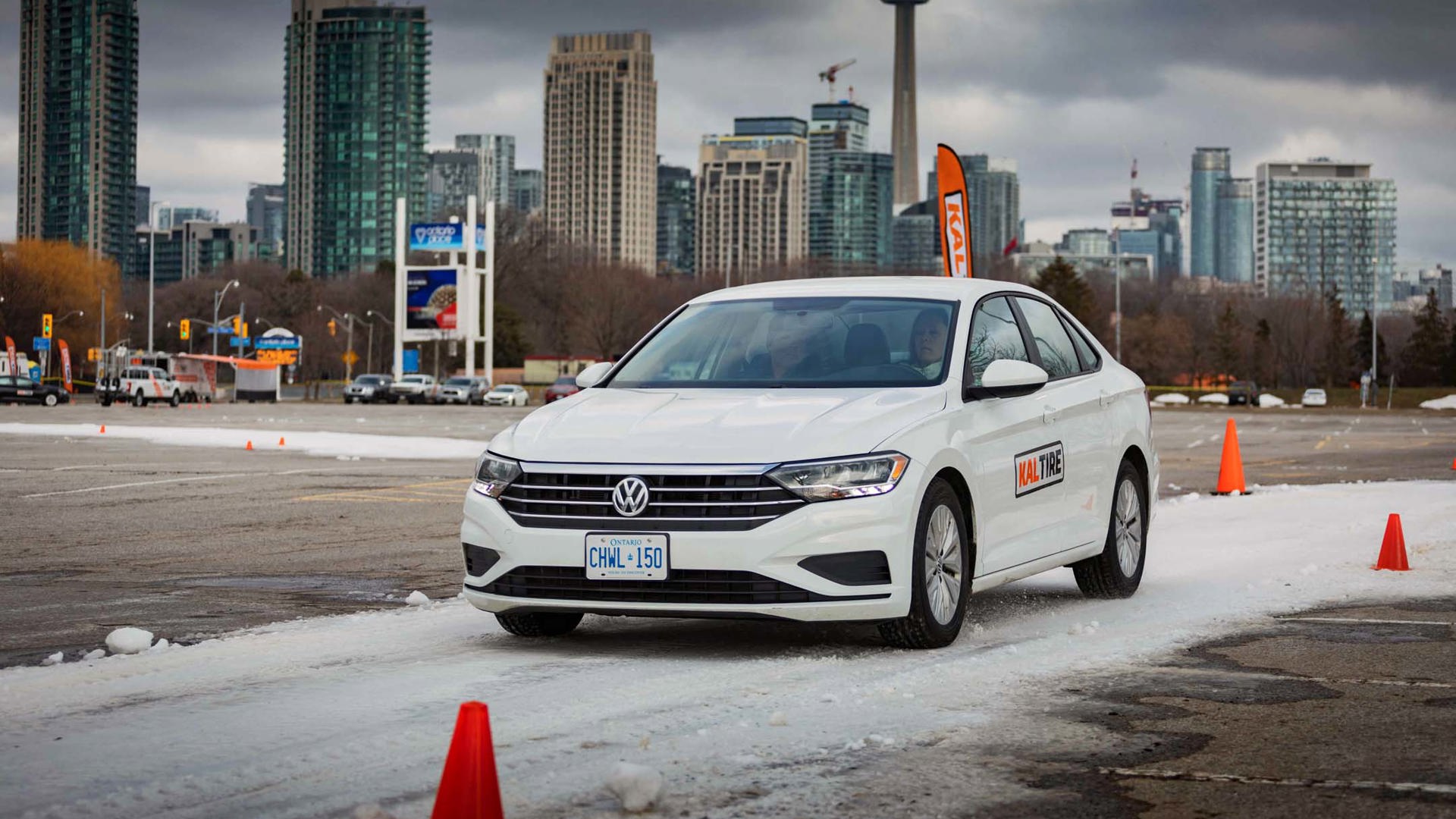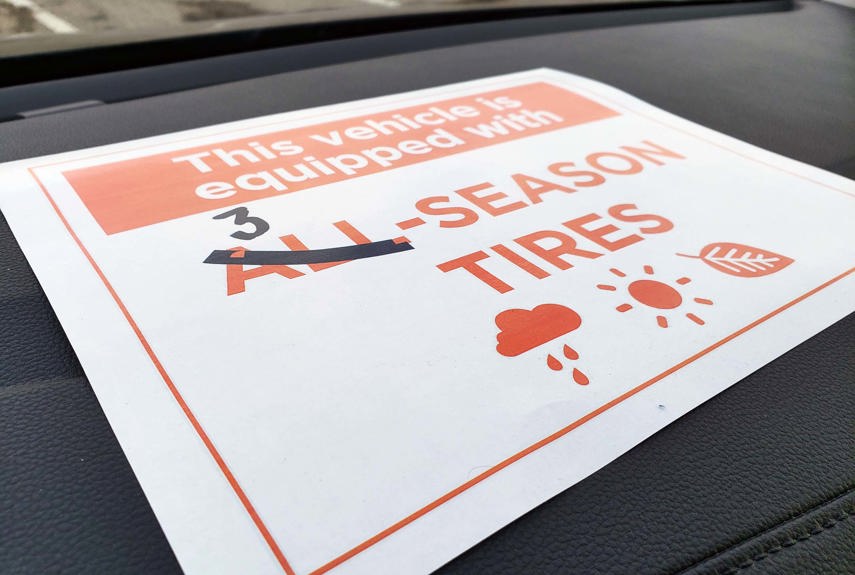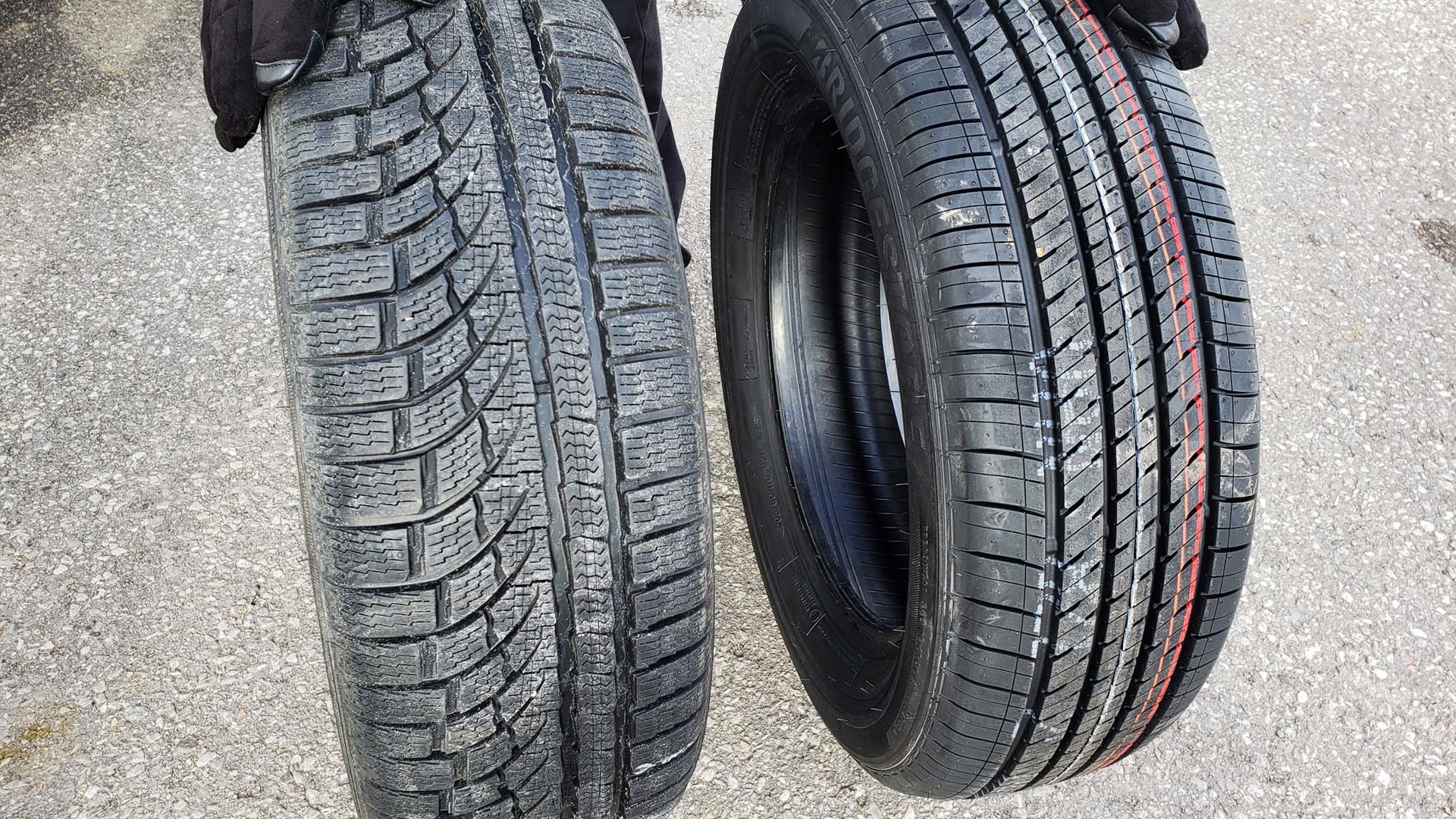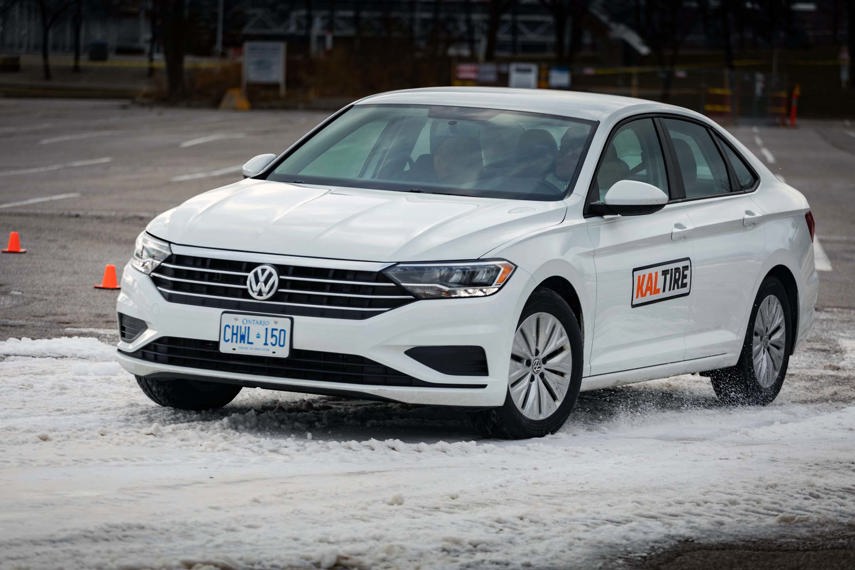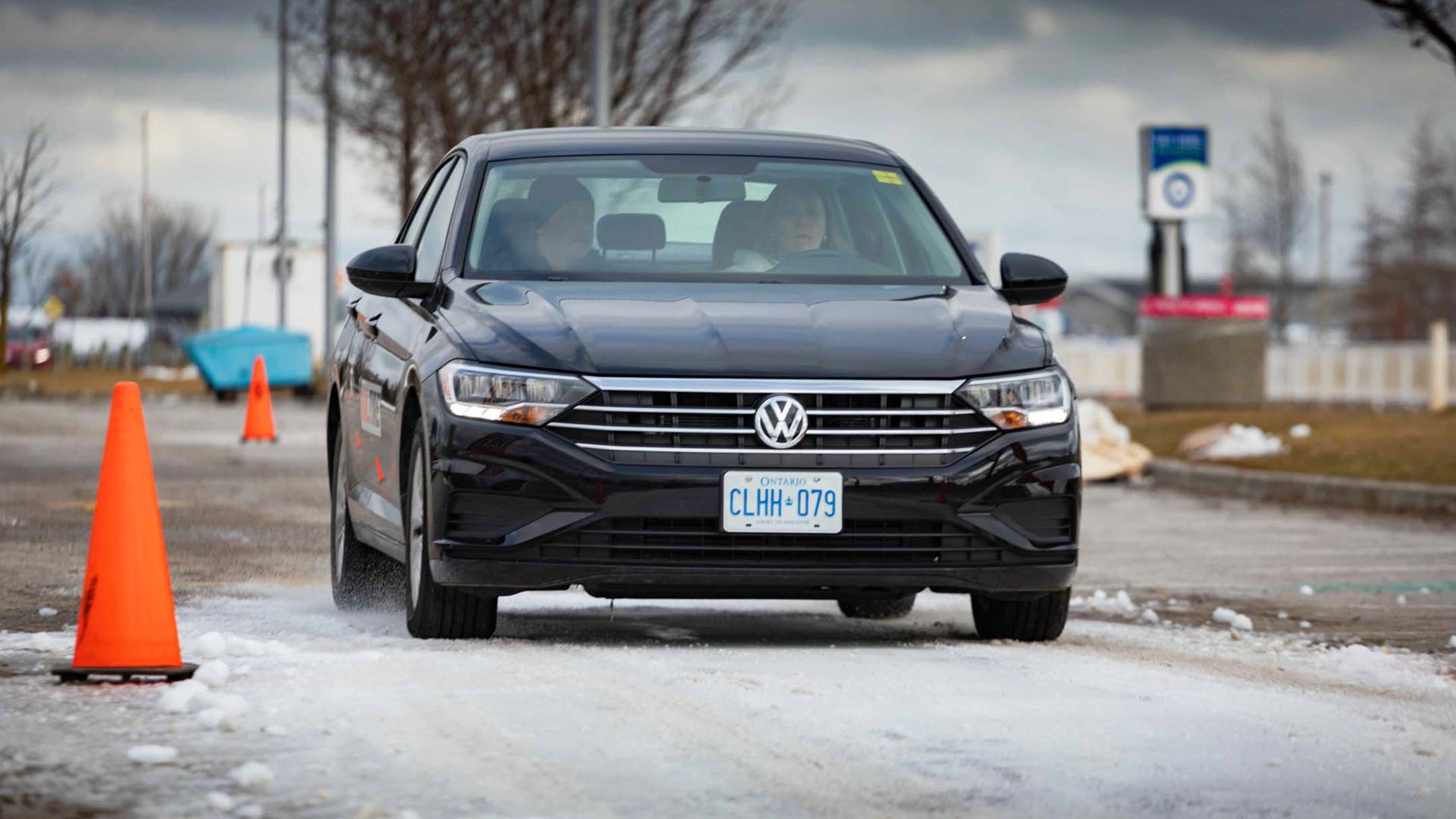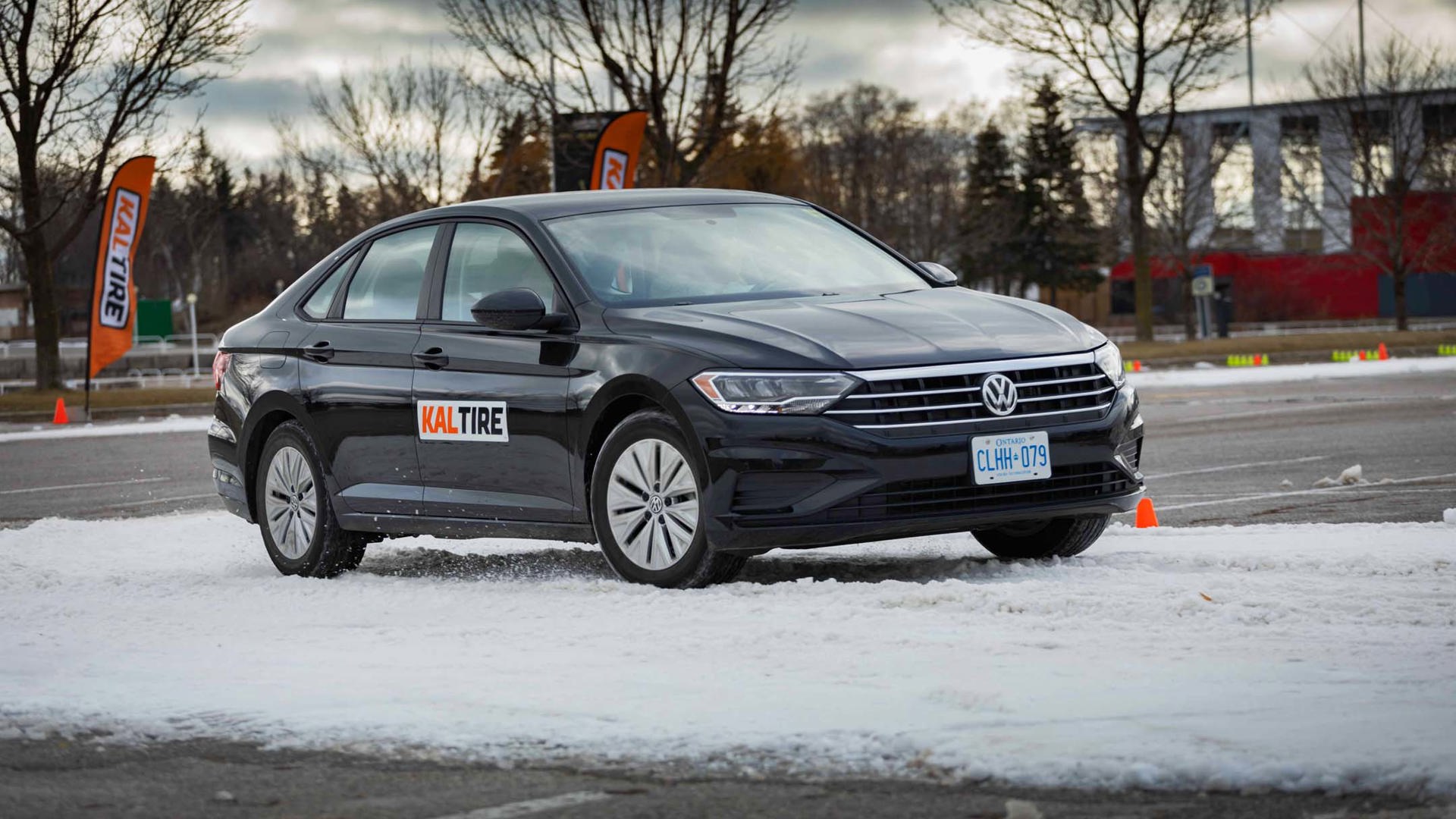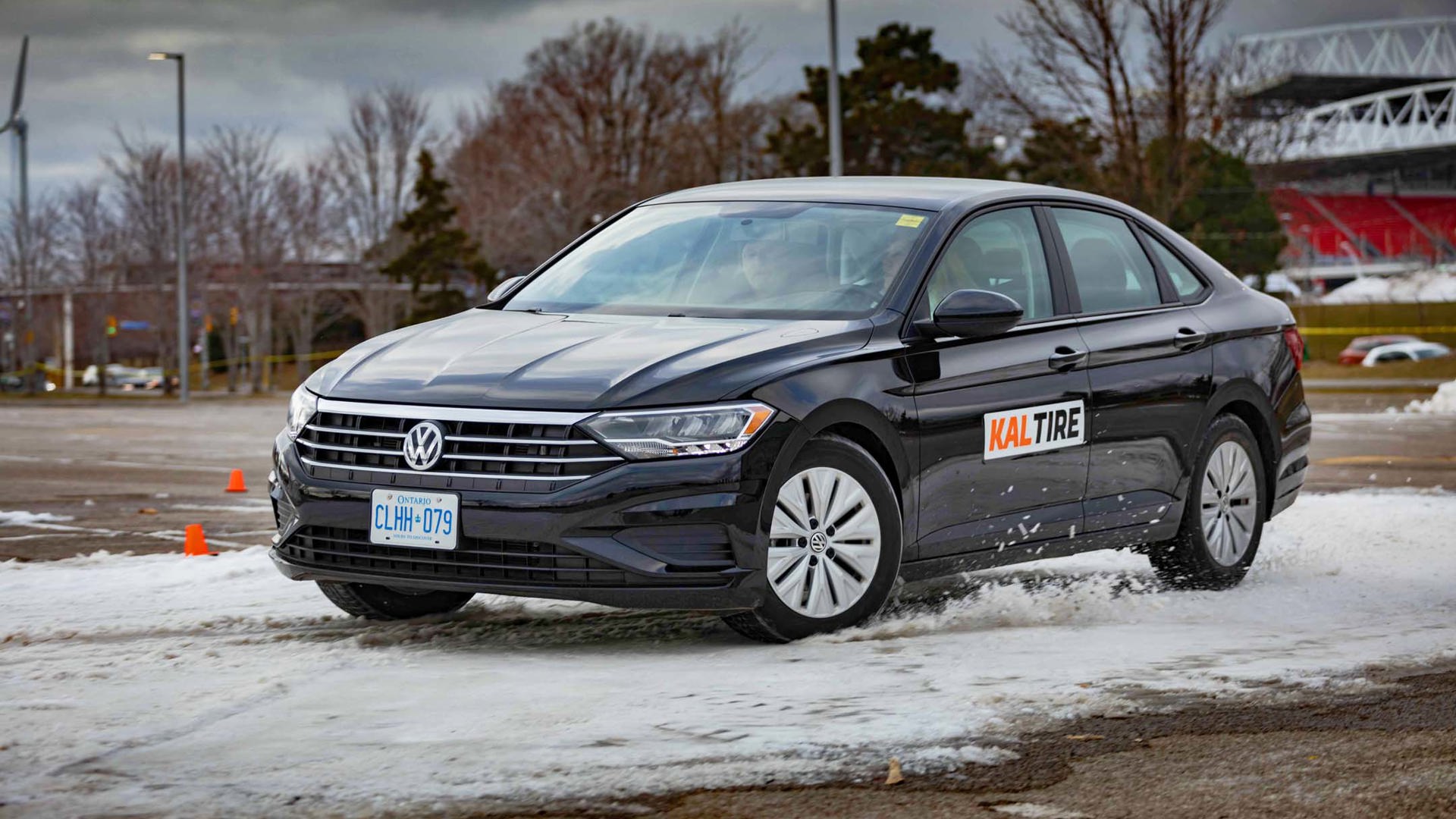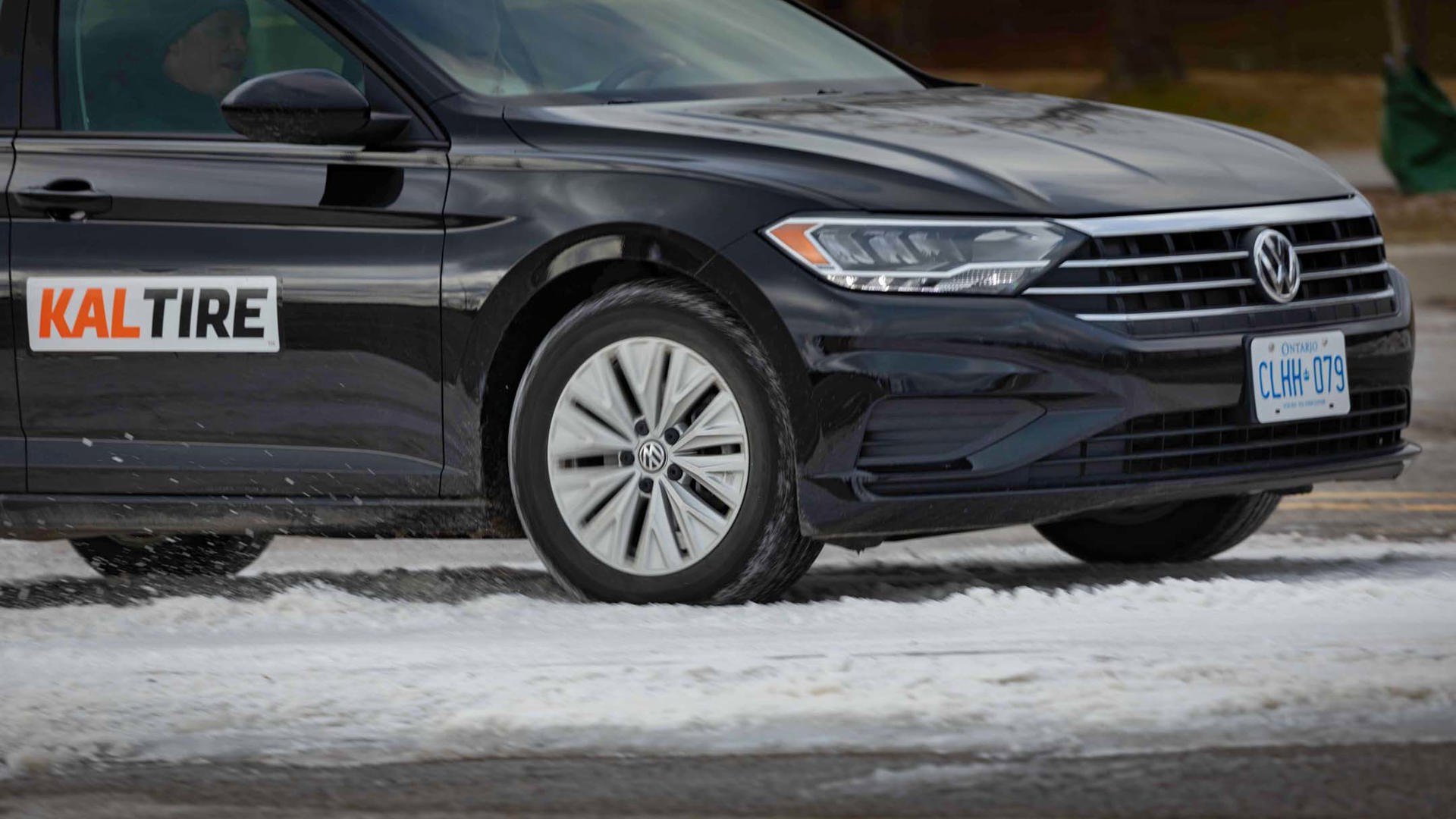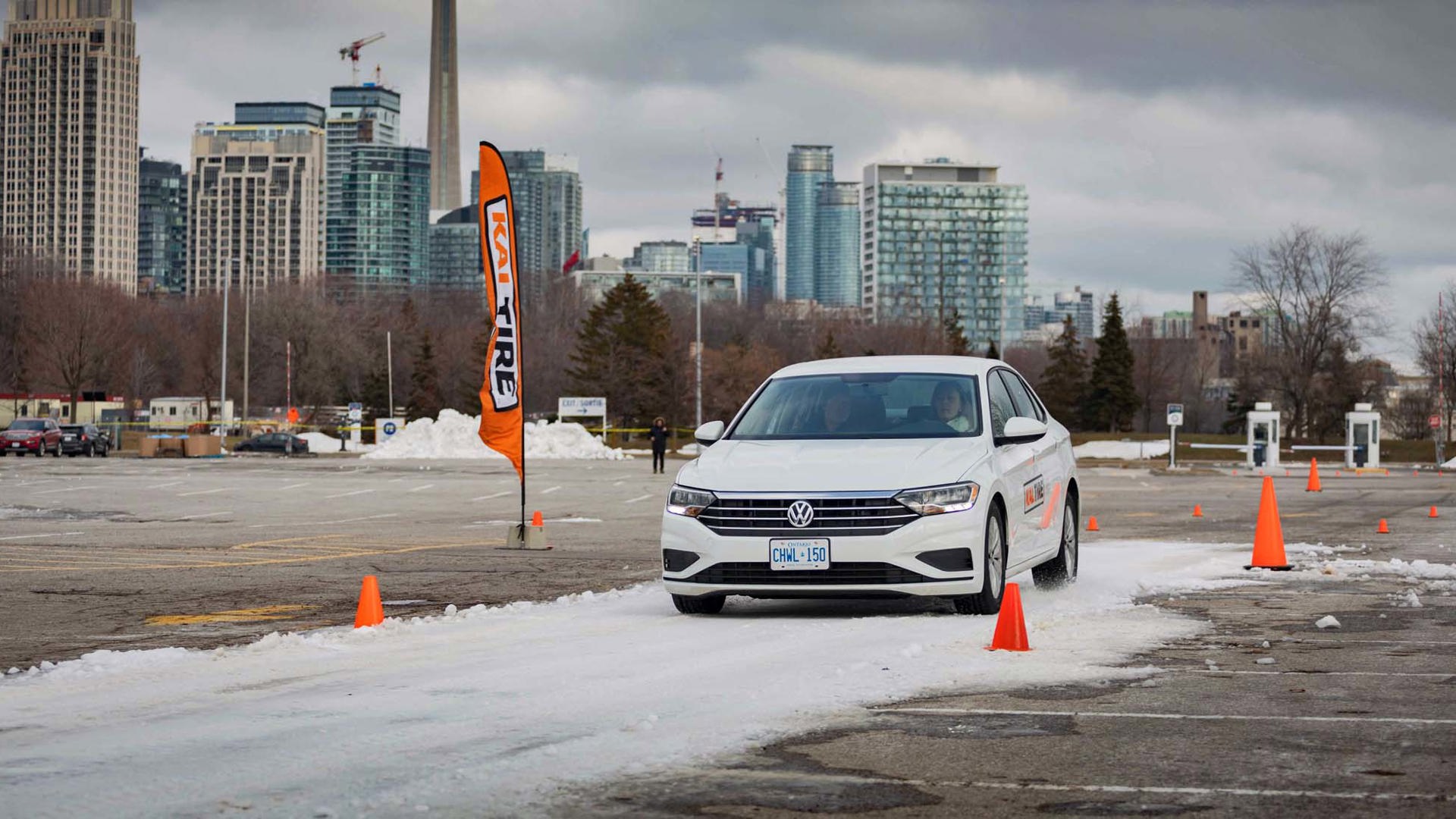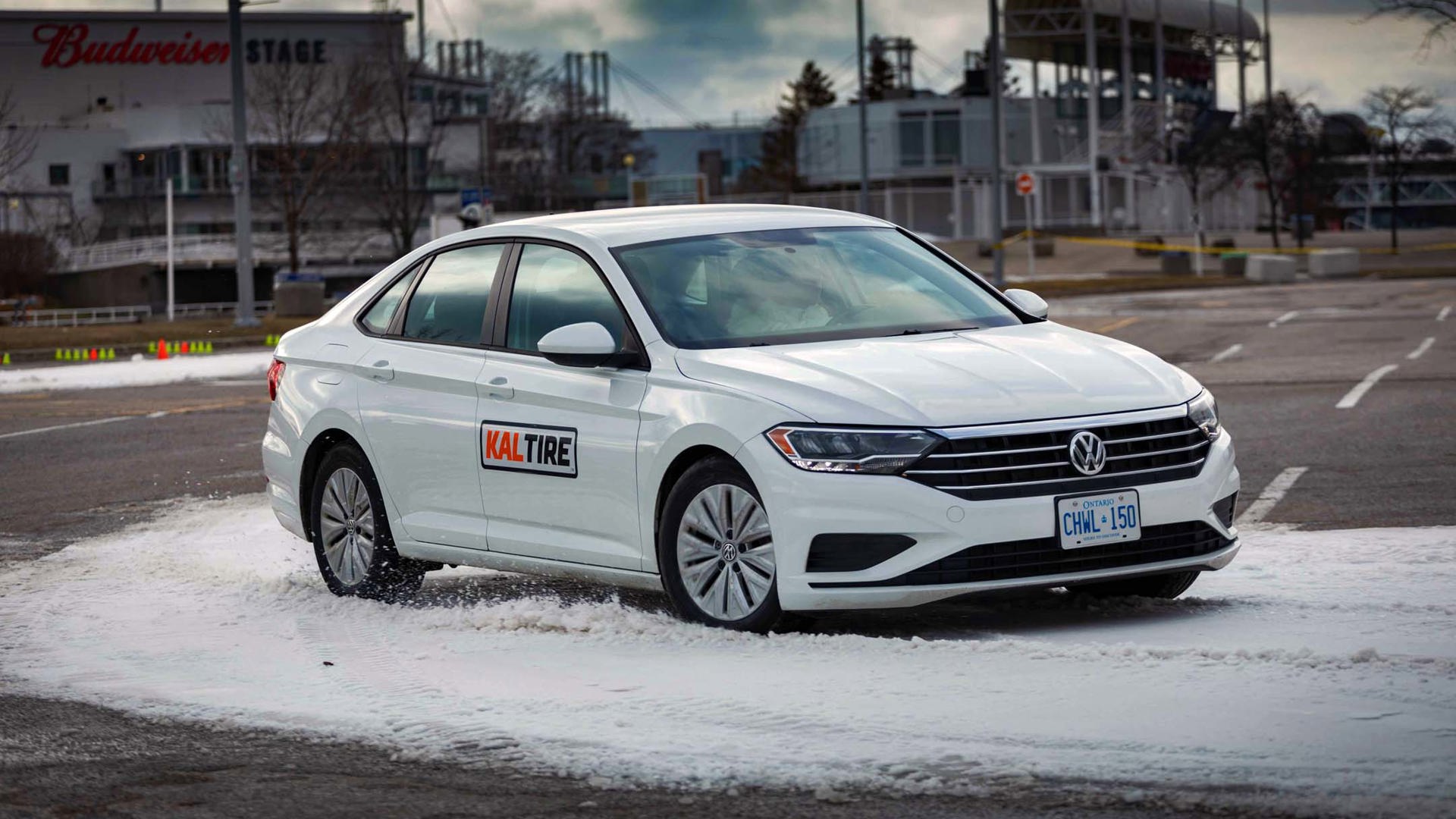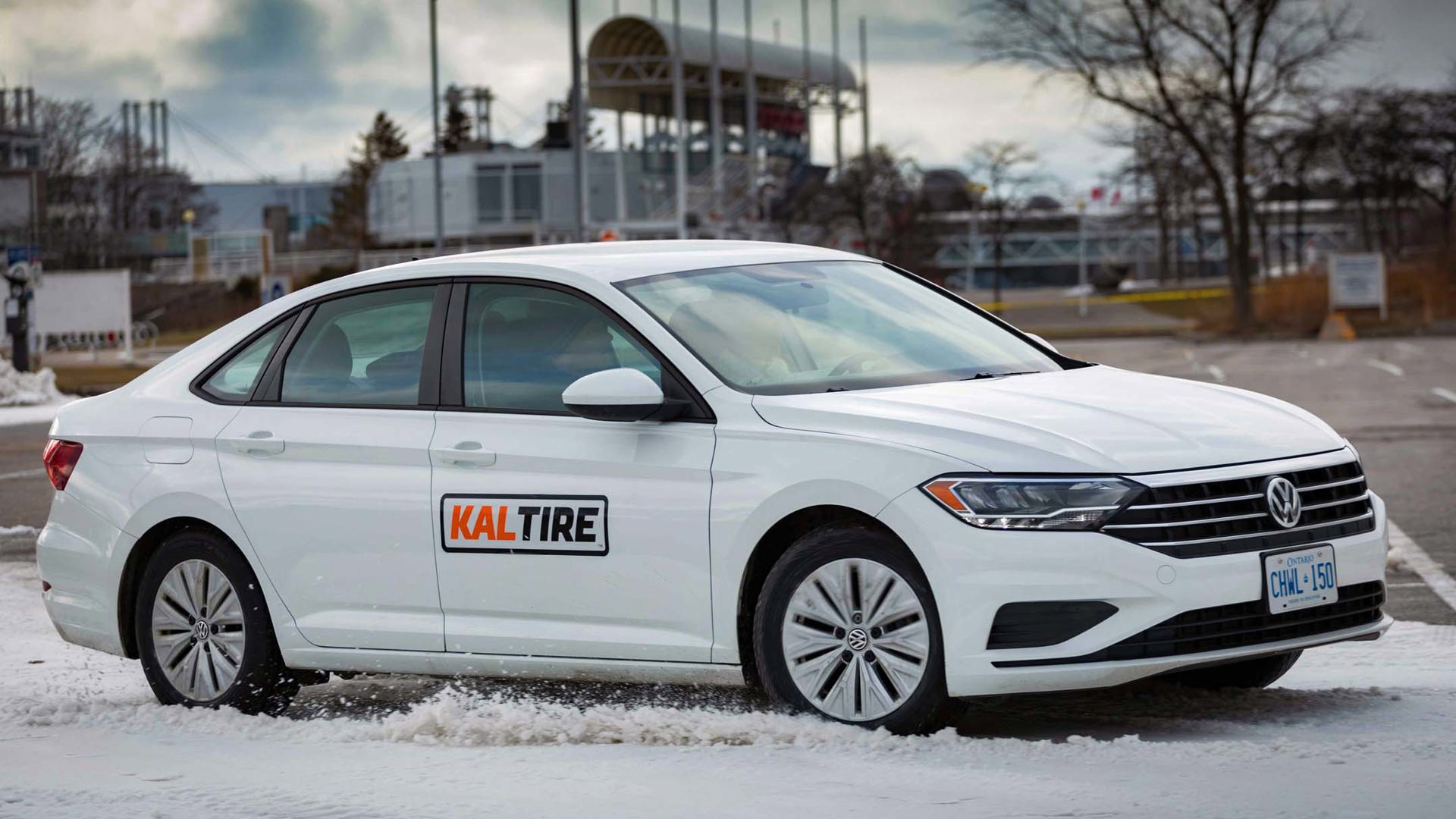Pardon me while I adjust my soap box a little bit here.
[clears throat and steps up]
Greetings, fellow Canadians. As we’re all aware, and as has been decreed from this platform multiple times, all responsible citizens must switch to winter tires once the exterior temperature drops below 7 degrees Celsius. This is due to the temperature at which various rubber compounds lose grip with the…
Hang on a second. I’m being handed a message.
…Wait, what? This is a thing? Well, alrighty then.
Folks, there’s been a change of messaging. There might be an alternative to that whole deal around taking your car in twice a year and figuring out where to store an extra set of tires.
They’re called all-weather tires, and while they’re definitely not the best solution for everyone, they just might be a viable alternative for certain drivers.
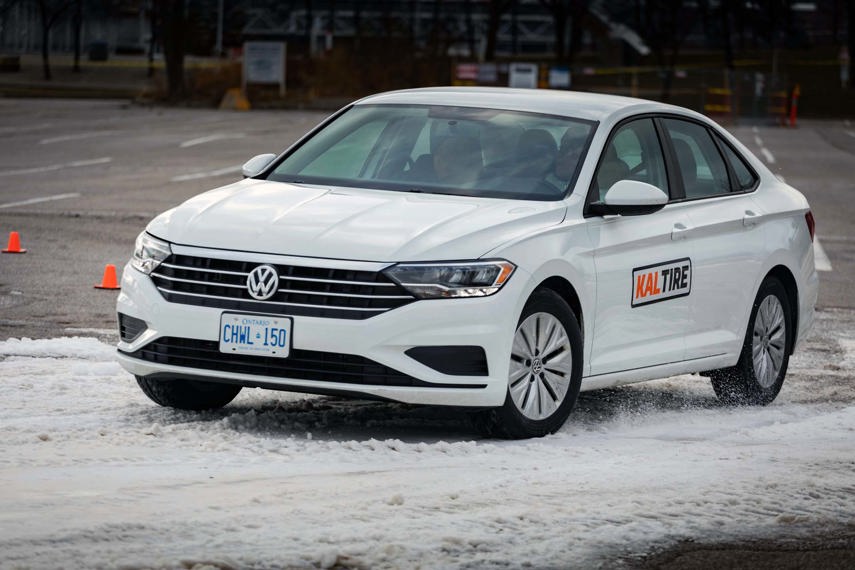
How They Perform
Two sets of tires were made available for testing at a recent event hosted by Kal Tire in downtown Toronto. It took place in late January, so the temperature was in the ideal range for winter tire testing: hovering a degree or so above freezing, just cold enough to maintain the snow that was brought in for the occasion. Each set was mounted on a rental-spec Volkswagen Jetta.
One was what the car ships with, Bridgestone’s Ecopia tire, which is a very good tire for improving fuel efficiency but is not at all intended for winter driving. The other was a set of Nokian WR G4 all-weather tires.
We were given three different snow-covered obstacles to drive through on each: a hard braking test, a circle course, and a slalom.
The circle is where I first noticed the intention of the all-weather tires. Going through the long turn, the all-weathers do start to lose grip just a little at roughly 25 km/h. It’s manageable, but it’s present; they’re hardly studded snow carvers. But that’s a stark contrast to the all-seasons, which started to break loose and activate the car’s stability control systems at a much lower speed, all while my hands sawed the steering wheel back and forth to stay in control.
But the braking test was the most telling. The challenge here was to speed up to 50 km/h, reach the specified marker, and then slam on the brakes hard enough to activate the anti-lock braking system, creating an equivalent manoeuvre by which to gauge each tire’s stopping distance.
On all three of the runs with the all-weather tires, my results were identical: I started at the same speed and stopped at the same point, that being at 80 feet, or 24.4 metres.
But on the all-season tires, the results varied much more, and not one run was as good as on the all-weathers: I stopped at 85 feet (25.9 m), 90 feet (27.4 m), and 95 feet (29 m). I missed my braking point by maybe a metre on two of these runs – not nearly enough to account for that much discrepancy.
And this is at 50 km/h. At highway speeds, these distances grow substantially. Winter tires would perform even better, but the all-weather tires made their point.
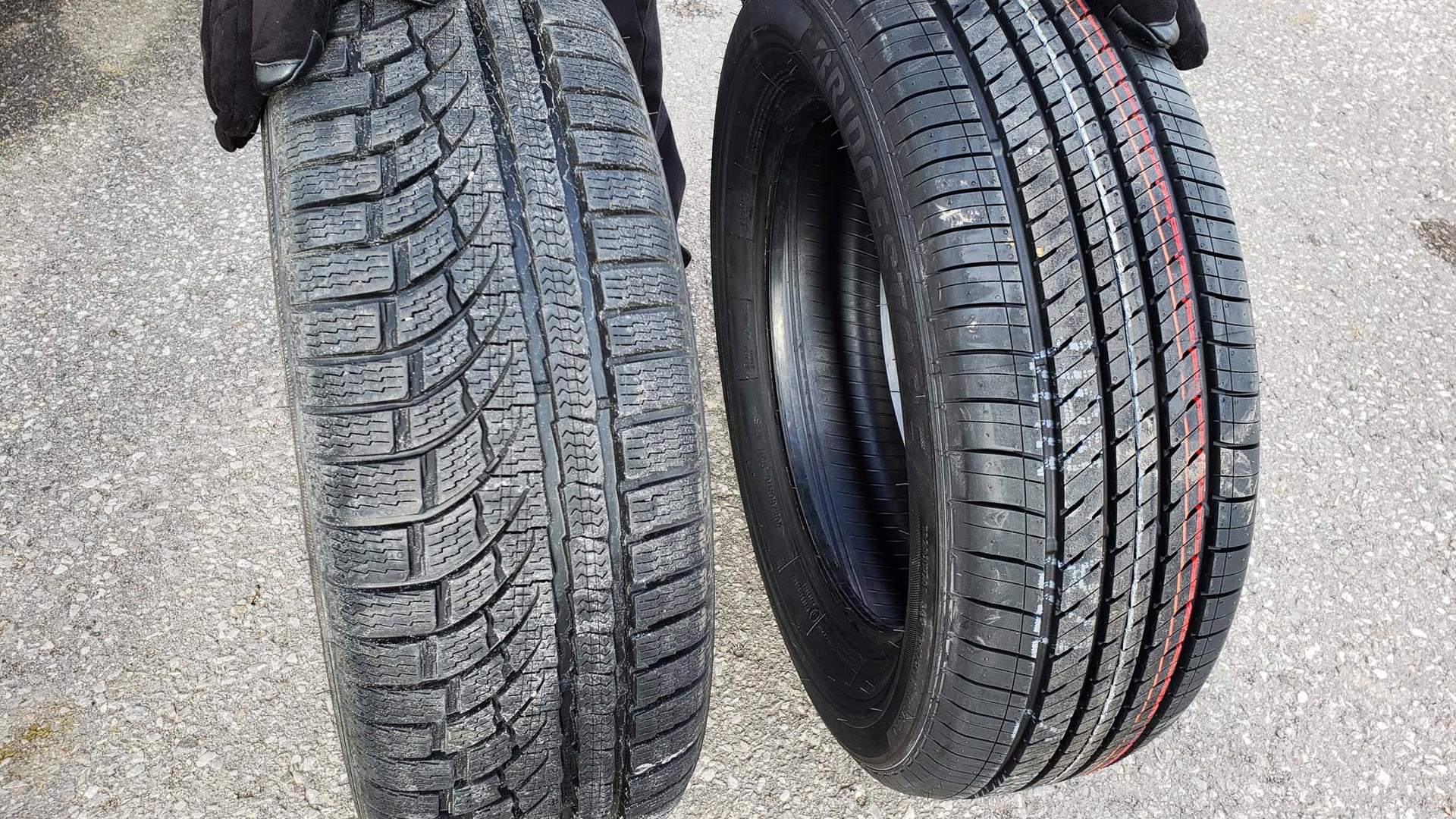
How All-Weather Tires Work
One of the secret-sauce ingredients that makes all-weather tires viable in winter weather is the rubber compound, which has a temperature tolerance that falls between an all-season and a dedicated winter tire.
“At a certain temperature, rubber becomes so hard that it becomes similar to glass,” says Steve Bourassa, director of products and pricing for Nokian Tires in North America. “Summer performance tires, between zero and 10 degrees, will get very hard. All-season tires will go a bit lower than that, all-weather tires will go a bit lower than that, and winter tires (perform to) minus 40, minus 50.
“For an all-weather tire, between minus 20 and minus 30 is where you’ll really start to see them harden up. Unless you’re talking about the far north, that’s suitable for most of Canada.”
Another difference is the tread pattern. All-weather tires have a split tread layout that includes some elements found on all-season tires and others used on dedicated winters, landing on a compromise between the two.
“(On) all-weather, there’s more siping (than on all-season),” Bourassa says. “Sipings are the cuts in the blocks, and each one of those provides biting edges. The more biting edges you have, the more grip you have in winter. Winter tires will have even more sipes.
“In (the section with a straighter tread pattern), the sipes aren’t cut all the way through the tread blocks. As soon as you cut a tread block all the way through, you end up with more tread squirm. It’s better for grip but not as great in summer conditions. With a variable type of siping design, you get the balance between grip in the wintertime and good handling in the summertime.”
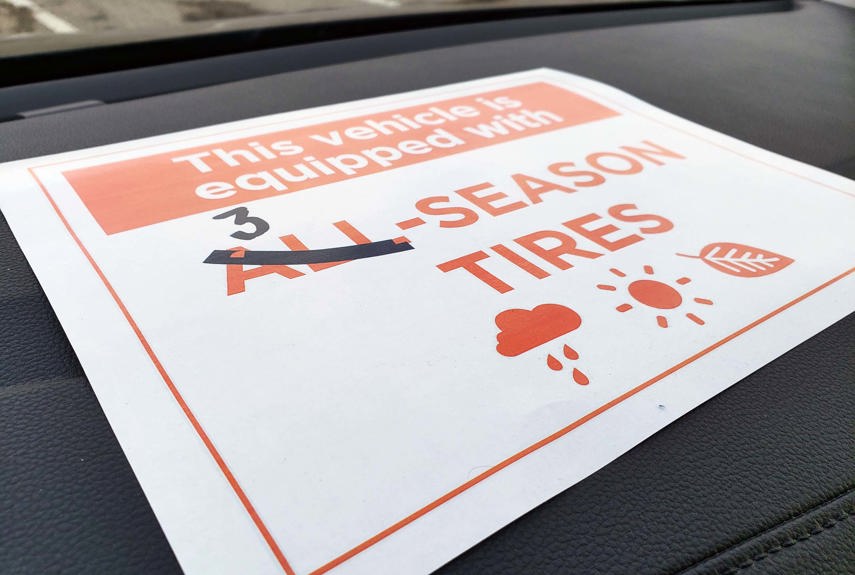
Who Should Consider Them, and Why They’re Not for Everyone
The upshot of these explanations is this: if you live in rural or more northern areas where you’re frequently dealing with extremely low temperatures and large amounts of snow – St. John’s, we’re looking at you – then you should stick with your winter and all-season tire routine. All-weather tires probably aren’t quite far enough along the spectrum to give you everything you need.
But if you live in a larger urban area where conditions are milder and the roads are kept in decent shape most of the time – or if you’re one of the 25 percent of Canadians who never does change away from all-season tires each winter, either due to the expense of the work or the mistaken impression that they’re up to the task – then all-weather tires might offer a better year-round solution.
“Of that 25 percent (who don’t change tires), half of them actually believe that the all-season is perfectly fine to run in the winter,” says Usman Mir, zone manager for Kal Tire. “The name doesn’t help us by any means, so we’re trying to rename that as three-seasons.
“Definitely, the best is to have the two dedicated sets. But if you’re not much of a driver, or you’re in (a city) where you’re driving small distances, the all-weather is definitely a great option for all year round.”

